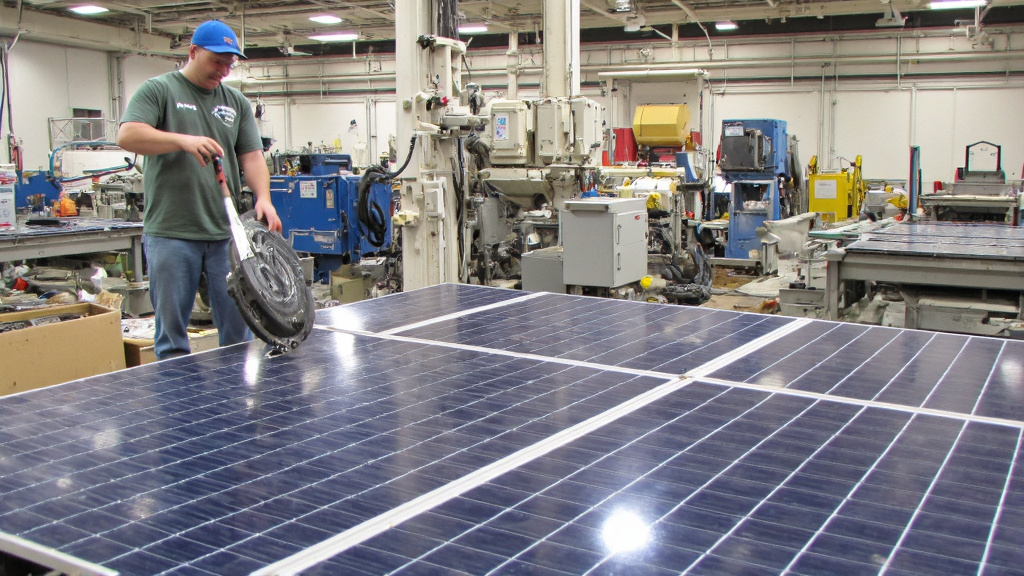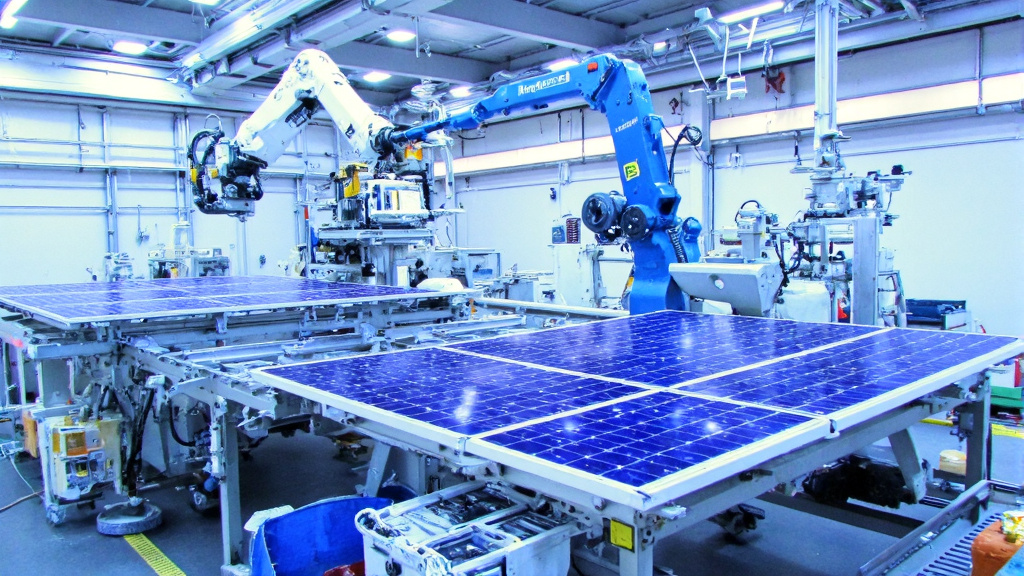5901 Botham Jean Blvd, Dallas, TX 75215
Solar Panel End-of-Life: What Happens After They Retire
May 1, 2025The solar industry is rapidly expanding across America. This clean energy shift offers significant climate benefits but also presents a growing waste challenge. Solar panels have limited lifespans, typically 25-30 years, after which their electricity output decreases and replacement becomes necessary.
The scale of this emerging waste stream is considerable. By 2050, the United States is expected to produce up to 10 million tons of solar panel waste, making it the world’s second-largest generator of end-of-life panels. This poses an environmental challenge that requires immediate planning and infrastructure development.
While solar panels generate emission-free electricity safely during use, their components contain materials that need careful handling at disposal. Many panels include valuable recoverable materials like aluminum, copper, silicon, and small amounts of silver. Some may also contain potentially harmful metals such as lead or cadmium in quantities that could classify them as hazardous waste.
What Are the Key Regulations Governing Solar Panel Disposal?

Under federal law, solar panels are subject to specific regulations when they reach the end of their useful life. The Resource Conservation and Recovery Act (RCRA) serves as the primary framework for how these materials must be handled.
When solar panels are removed from service, they immediately become solid waste regulated under RCRA Subtitle D. The next steps depend on their composition, as not all solar panels are treated equally from a regulatory standpoint.
Hazardous Waste Classification
Solar panels may be classified as hazardous waste if they contain certain levels of toxic metals. Many panels have small amounts of lead, cadmium, and other metals that can be harmful at high concentrations.
The EPA requires the Toxicity Characteristic Leaching Procedure (TCLP) test to determine if panels are hazardous. This test simulates leaching conditions in a landfill. If metals leach out at concentrations exceeding regulatory limits, the panels must be managed as hazardous waste.
Interestingly, testing has shown considerable variation. Even panels from the same manufacturer and model line may yield different results, with some passing and others failing the TCLP test.
Recycling Pathways
The EPA encourages recycling over disposal for solar panels. Several regulatory options exist for recycling hazardous waste solar panels:
- The transfer-based exclusion (40 CFR Section 261.4(a)(24)) allows hazardous solar panels to be recycled under specific conditions in states that have adopted the 2015 or 2018 Definition of Solid Waste Rule.
- Recycling must meet the legitimate recycling factors outlined in 40 CFR Section 260.43, which prevent sham recycling activities.
- Materials cannot be speculatively accumulated prior to recycling, per 40 CFR Section 261.1(c)(8).
Universal Waste Rulemaking
On October 23, 2023, the EPA announced a significant regulatory development. The agency is working on a proposed rule to add solar panels to the universal waste regulations under 40 CFR Part 273. This change would simplify management requirements for hazardous waste solar panels.
The EPA is also developing tailored universal waste standards for lithium batteries. This dual approach addresses two rapidly growing waste streams in the renewable energy sector.
State-Level Regulations
Several states have already implemented their own regulations for solar panel disposal:
- California and Hawaii have classified PV modules as universal waste.
- Washington has established a Photovoltaic Module Stewardship and Takeback Program.
- New Jersey has formed a Solar Panel Recycling Commission.
- North Carolina has commissioned a report on the regulatory program for managing renewable energy equipment.
Generators in these states must comply with both federal and state-specific requirements, which may be more stringent than federal standards.
When determining how to properly dispose of solar panels, manufacturers and end-users must consider both composition and location. The regulatory landscape continues to evolve as the volume of end-of-life solar panels increases nationwide.
What Are the Best Practices for Managing End-of-Life Solar Panels?
Managing end-of-life solar panels requires a systematic approach to minimize environmental impact while maximizing resource recovery. The solar industry faces growing waste challenges, with projections indicating the United States will have up to one million tons of solar panel waste by 2030, increasing to an estimated ten million tons by 2050.
Proactive Planning
Establishing a documented lifecycle management process during installation creates a foundation for responsible end-of-life handling. This planning should include detailed records of panel specifications and anticipated decommissioning dates.
The process should involve collaboration between manufacturers, installers, and waste management specialists. Early planning enables organizations to budget for proper disposal and identify the best recycling options before panels reach their end of life.
Reuse and Repurposing
Extending the life of solar panels through reuse represents a significant opportunity. Many decommissioned panels still function at acceptable efficiency levels even after their primary use cycle.
Testing older panels to ensure they meet electrical safety standards is essential before repurposing. Partially functional panels can find new applications in less demanding contexts, further extending their useful life.
The reuse market offers economic benefits while reducing waste. Organizations should consider developing criteria for determining when panels are suitable for reuse versus recycling.
Recycling Processes
Recycling recovers valuable materials from panels that can no longer be used. Modern recycling methods can extract precious metals like silver and copper from crystalline-silicon panels.
The recycling process typically involves disassembling panels, separating components, and processing materials for recovery. Different panel types require specific recycling approaches due to their varying compositions.
Thin-film panels containing cadmium telluride or copper indium gallium diselenide need specialized handling procedures to safely recover hazardous materials. Proper recycling prevents these substances from entering landfills.
| Solar Panel Type | Recyclable Materials | Recycling Process | Recycling Rate |
|---|---|---|---|
| Crystalline-Silicon | Glass, Aluminum, Silicon, Copper | Disassembly, Mechanical Separation | Up to 85% |
| Thin-Film | Glass, Cadmium, Tellurium | Shredding, Chemical Treatment | 90% for glass, 95% for semiconductors |
| Organic | Polymer, Cellulose Nanocrystals | Dissolution in Water | Easy recycling at room temperature |
Regulatory Compliance
Solar panels may be classified as hazardous waste under the Resource Conservation and Recovery Act if they contain leachable heavy metals above regulatory thresholds. Manufacturers and owners must understand how their specific panels are classified.
The EPA announced in October 2023 a new rulemaking effort to improve end-of-life management by adding solar panels to universal waste regulations. This change aims to streamline proper handling while maintaining environmental protections.
Several states have implemented their own policies for solar panel waste. California and Hawaii have established universal waste regulations for photovoltaic modules. Washington has created a product stewardship program requiring manufacturers to take back and properly manage discarded panels.
Proper Handling of Damaged Panels
Broken panels require careful management to prevent environmental contamination. Damaged panels may release hazardous materials more readily than intact ones.
Handlers should use appropriate personal protective equipment when managing broken panels. Storage should occur in weather-protected areas with proper containment to prevent leaching.
Transportation of damaged panels requires secure packaging to prevent further breakage. Organizations should work with qualified waste handlers familiar with solar panel materials.
How Are Different Types of Solar Panels Managed at End-of-Life?

Crystalline-silicon and thin-film solar panels follow distinct management pathways at the end of their life. The composition of each panel type dictates how they are processed, recycled, and whether they are classified as hazardous waste.
Crystalline-Silicon Panel Management
Crystalline-silicon panels dominate the solar market, accounting for over 95% of panels sold today. These panels contain valuable metals such as silver and copper, which can be recovered through appropriate recycling processes.
The recycling procedure for crystalline-silicon panels starts with removing the aluminum frame and junction box. The panels then undergo mechanical separation to recover glass and silicon wafers. This process is generally less intensive than that required for thin-film technologies.
While crystalline-silicon panels contain some metals, many pass toxicity tests and are not classified as hazardous waste. This classification can vary by specific panel model and manufacturer, necessitating individual testing in some cases.
Thin-Film Panel Management
Thin-film solar panels present different end-of-life challenges due to their unique composition. These panels use semiconductor materials like cadmium telluride (CdTe) or copper indium gallium diselenide (CIGS) layered on supporting materials such as glass, plastic, or metal.
The recycling process for thin-film panels is typically more intensive. These panels are often shredded completely and subjected to chemical treatments to separate and recover the semiconductor materials. The presence of cadmium in CdTe panels requires special handling protocols due to its toxicity.
Thin-film panels are more likely to be classified as hazardous waste due to the potential leachability of metals like cadmium at concentrations that would fail the toxicity characteristic leaching procedure (TCLP) test required under Resource Conservation and Recovery Act (RCRA) regulations.
Hazardous Waste Classification Factors
The classification of solar panels as hazardous waste is not straightforward. Testing has shown that some panels pass toxicity tests while others fail, even within the same model and manufacturer line.
The primary determination method is the TCLP test, which measures how much of certain toxic substances might leach from the panels into the environment. Heavy metals like lead and cadmium are the main concern, as they can be harmful to human health and the environment at high levels.
When a solar panel is classified as hazardous waste, its management must follow RCRA Subtitle C regulations. However, hazardous waste solar panels that are recycled may qualify for regulatory exclusions, including the transfer-based exclusion in states that have adopted recent Definition of Solid Waste Rules.
| Panel Type | Recyclable Materials | Hazardous Waste Classification | Recycling Process |
|---|---|---|---|
| Crystalline-Silicon | Aluminum, Copper, Silicon, Silver | Varies by model | Mechanical separation, recovery of glass and silicon wafers |
| Thin-Film | Cadmium, Telluride, Copper, Indium, Gallium, Diselenide | More likely due to cadmium | Shredding, chemical treatments for semiconductor recovery |
Environmental Considerations in Transportation and Processing
Transportation significantly impacts the environmental footprint of end-of-life solar panel management. Studies indicate that crystalline silicon modules are the most economical PV technology to transport, costing approximately $2.3 per square meter (or 0.87 cents per watt) for 1000 km in the United States.
The overall environmental impact of panel recycling varies by technology. While crystalline silicon panel manufacturing has a higher initial environmental impact, the recycling processes for thin-film technologies often require more energy-intensive chemical treatments to recover the semiconductor materials safely.
As the solar industry continues to grow, developing efficient and environmentally sound recycling processes becomes increasingly important. By 2030, the United States is expected to have approximately one million tons of solar panel waste, making proper end-of-life management a critical environmental consideration.
Conclusion: The Future of Solar Panel End-of-Life Management

The rapid growth of solar energy presents both opportunities and challenges for environmental sustainability. As installations increase worldwide, the industry must address the rising volume of solar panel waste. By 2035, nearly 80 million tons of decommissioned panels are expected globally. This situation demands immediate attention to recycling and proper end-of-life management.
Regulations, technological innovations, and industry collaboration will shape the future of solar panel recycling. The market is responding, with growth projections from $333.5 million in 2024 to about $2.5 billion by 2034. This growth represents not only environmental responsibility but also significant economic opportunity, with recovered materials potentially worth $11 billion by 2050.
For expert guidance on recycling solar panels and other electronics, contact Okon Recycling at 214-717-4083.
